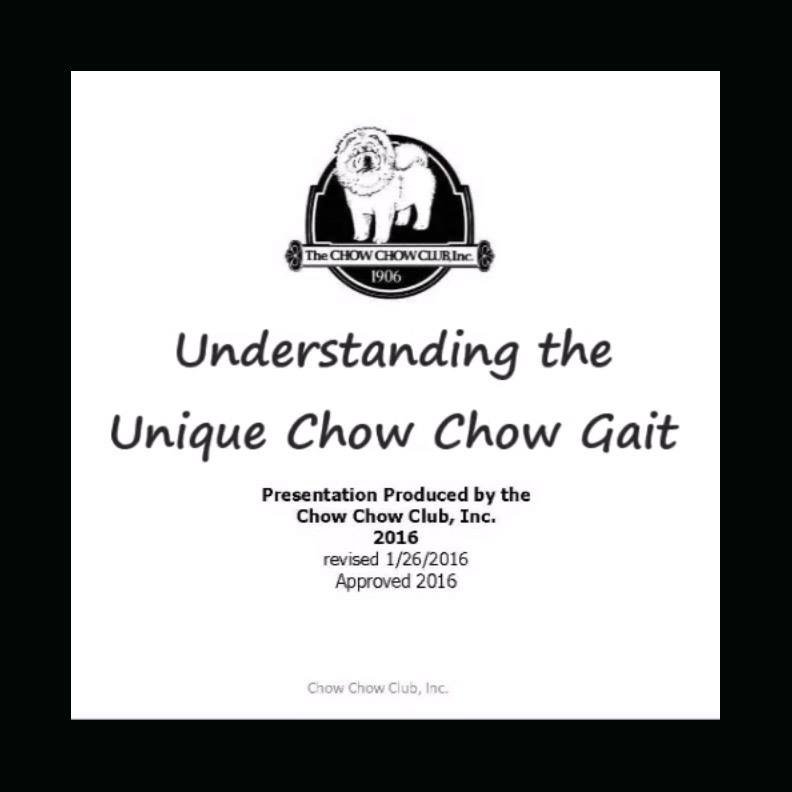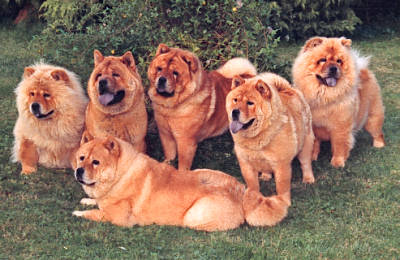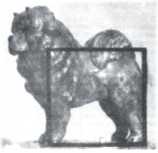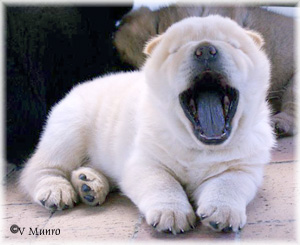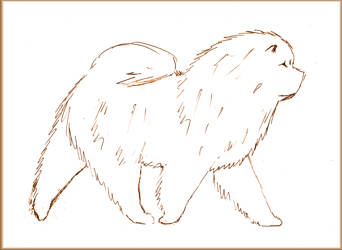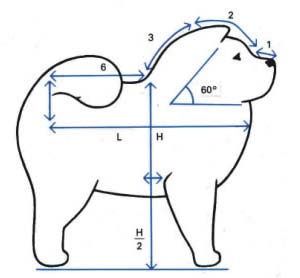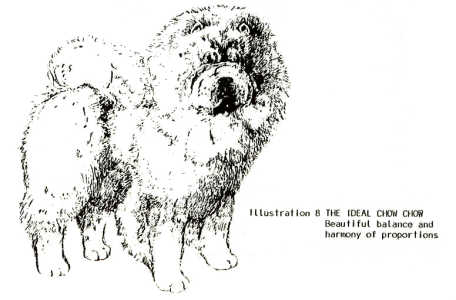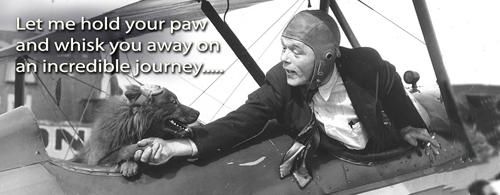Chow Chow Africa education
Best for the breed -
breeders And Judges Education
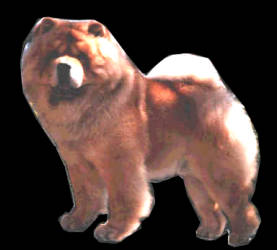
Judging of the Chow Chow
by Specialist Judge - Mona Selbach, Tsingfu Chow Chows, Norway
A
bit of background on the author:
I got my first Chow in 1963, showed my first Chow in 1966, bred
my first litter in 1972, and finally in 1982, I was passed by the
Norwegian Kennel Club
to judge Chows at Championship show level. Today I am passed to
award certificates in approx. 85 breeds – with more to come.
Being for many years the only active breeder judge of Chows in Norway,
has given me much of the responsibility of teaching other judges
about Chows
and how to judge them. We have a unique breed compared to most other
breeds in our Spitz Group (FCI Group 5), and thus it is important
to tell the
judges what is so special about our breed and how to maintain our
breed for the future.

Left: The author on assignment in Norway.
Altering Breeds
One
problem that has come forward, is the Authorities of the Common
Market wish to alter everything about the different breeds
that they think is abnormal – or not as sound as they,
themselves, think it should have been. Which means for instance,
Cocker Spaniels might have ear problems, then breeders should
try to breed Cockers with standing, not hanging, ears, to
give a simple explanation to the problems. Of course Chows
have also caught the eyes of the Authorities, and straight
back legs and deep set eyes are their main targets in Chows.
Some judges these days seems to just look at eyes or angles
in back legs and forget about the rest of the Chow, although
type, and type again, should be their main concern. If the
type is not right, you cannot put up a Chow to win although
it might have dry eyes and/or lots of angles in the back legs.
If we lose type, we will lose the Chow, and the result will
be a dog that hopefully still has a blue tongue, but apart
from that, could be any Spitz breed, for instance a Finnish
Spitz.
Picture in your Mind
I therefore think it is very important for the judges to have a
“picture inside the head” of a Chow Chow who can be
a sample for what we want
a Chow to look like. For the judges in Norway I have used GB Ch.
Ukwong King Solomon as a sample. Probably quite a few Chows would
have been OK to use, but everyone in Norway know about “Solly”s
wins. He has type, size and balance. And balance is utmost important:
depth of body compared to length of legs, length of back, the arched
neck, the tail set, strength of head and bone, all add to the overall
balance
of the Chow. The Chow should be well built, solid, but not overdone
in any direction.
 Ch (Int/Nor) Perlrema
Trikki Tom (Imp UK) Ch (Int/Nor) Perlrema
Trikki Tom (Imp UK) |
 BIS Ch (UK) Ukwong
King Solomon BIS Ch (UK) Ukwong
King Solomon |
Gait
True
Chow Chow gait is really a problem for most judges not used to Chows.
You very often hear judges say:“This and this Chow really moves well”. Very often I
feel that the movement of these special well moving Chows would
have been more
correct for a German Shepherd than for a Chow. The stilted gait
where the action comes from the hip with little action in knee or
hock is
seldom seen these days, and I really feel the judges have to be
very aware of this and do their best to help maintaining
this unique characteristic of the breed.
I think the judges play a very important part when it comes to the future of a breed. What they put up in the ring to day, will most certainly be the mothers and the fathers of the Chows of tomorrow. Although Chow breeders know what they like and know what they are breeding for, Champions and winner titles are vital to get your studs used and your puppies sold. It is very important for breed clubs to keep close contact with the judges and inform them about things that need special attention in the ring. Of course there is the standard to be followed, but I cannot see any harm in the breed clubs helping the judge to fill the frame as correctly as possible. And the judge in his turn, should report back to the club and breeders if he finds problems that seem to be increasing.
Some Pointers
In Norway today these items are according to the breed club, important
for the judges to pay attention to:
* The balance of the Chow.
Quite a few of today’s Chows in Norway have too short legs
compared to the length of the body – or too long bodies compared
to the length
of the legs. But if the body is too long compared to the length
of the legs, the Chow would not be up to the size required in the
standard.
Worth mentioning is also the length of the ribcage, between the
ribcage and the hindquarters, the loin should be no longer than
4 fingers wide,
a short ribcage and a long loin is not a short coupled Chow. It
is important to the judges to be aware of these problems and choose
the
well balanced Chow if they otherwise think two exhibits are equal.
*The Chow should be an active dog,
It is not right when the dog drags himself around the ring. The
Chow has pride and dignity, you can not achieve this with a “come help me and die” type of Chow. Exhibitors some
times excuse their Chow to me in the ring, and say they are sorry
he or she is so lively.
I do not think they should be sorry, they have a happy healthy lively
Chow, what is wrong about that!
*The angles in the front and the length of the upper arm.
Quite a few Chows today seems to have lost the angles and length
of the upper arm, thus they lose the lovely arched neck, the good
fronts
and as a consequence the head is carried between the shoulders and
not on top of them.
There will always be points concerning the Chow judging that might be improved, but I feel as long as the judges, clubs and breeders keep in close contact and exchange views and keep a firm eye on the standard, we are on the right track to maintain and maybe improve our beautiful breed.
 |
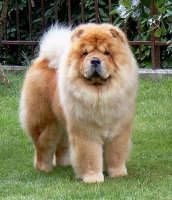 |
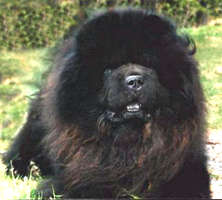 |
||
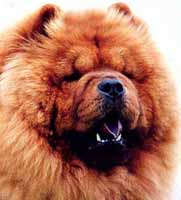 |
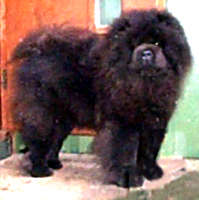 |
Trimming of the Coat
There
is a strong tendency these days, although it might vary from country
to country, to trim a Chow to make the ears look smaller,
the neck longer, the tailset better and the legs longer. The exhibitors
find that helping the nature a little makes their dog look
more correct according to the standard, and some judges even get
so used to this that they penalise Chows that look natural in the
ring.
I have heard it said in the ring that “sorry, your Chow would
have won today if it had been properly trimmed” or“sorry, your Chow looks so profuse coated compared with the
other Champions”.
I think it is very important that both exhibitors and judges start reading the following lines in our Chow Chow standard again “Any artificial shortening of the coat which alters the natural outline or expression should be penalised”. This is the last sentence in the part about coat. The standard is to be followed and respected. It is our guide to maintain our Chow Chow from Ch Chow VIII till today, and just remember the small changes that have been made, have been made for the soundness of the breed. When the standard says “any artificial shortening of the coat which alters the natural outline or expression should be penalised”, it is a long sentence that can be cut down to two words: No trimming!! Of course, the Chow should be clean, groomed and presented looking as beautiful as just a Chow can do, but it is not to be presented looking more like an oversized Pomeranian than a Chow. (Actually the standard says you should not trim the Pomeranian either!).
I feel from my judging experience the last years that trimming is getting more and more common in the Chow ring. In my opinion the judges must take most of the blame for the growth of this problem. Yes, it is a problem as it is against the Standard! The exhibitors will present their Chows the way they think the judges will want to see them. If you as an exhibitor have been told by a judge that your Chow would have won if it had been properly presented (trimmed), you will know exactely what to do before the next show. Please Chow judges, take a look at your Chow Chow standard and read the sentence again: “Any artificial shortening of the coat which alters the natural outline or expression should be penalised”, and let us get our beautiful breed back in the ring: The clean wellgroomed natural Chow Chow.
Wanting to publish these articles or link to them?
Some authors have given permission for these articles to be printed out for private free use internationally, both in national judges' training schemes and for private free education of individuals. However, all articles remain COPYRIGHT of the authors and no copies of these articles may be published in any way without written permission from the authors. For permission please contact the authors directly or please contact the webmaster.
On
the web, it will be appropriate to LINK to the articles which
originally appear on this website.
Acknowledgement of the articles' original appearance on this website
is appropriate and appreciated.
Breed Standards:
More Judging Articles:
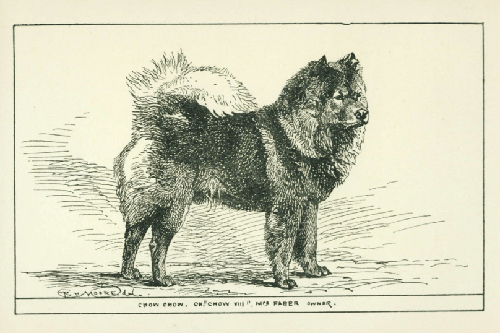 Learn more about the Chow Chow upon which the Breed standard is said to have been based.
Learn more about the Chow Chow upon which the Breed standard is said to have been based.
Learn about the Chow Chow's rich history on the Chow Chow Archives. This will help you understand the need for functional structure and moderate type.
